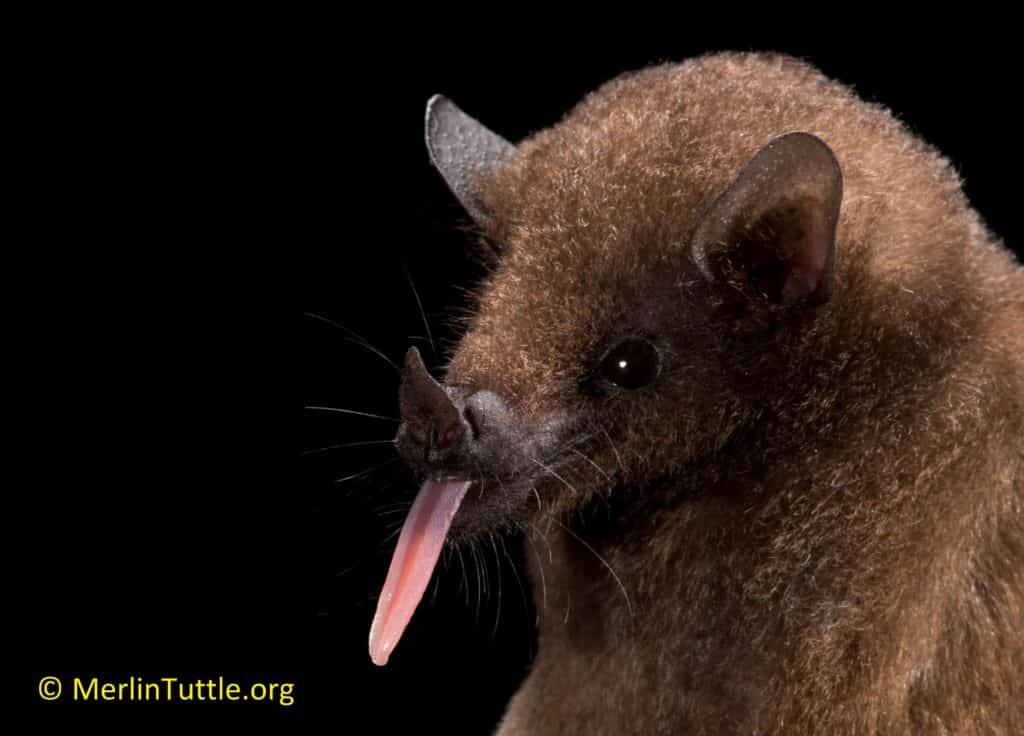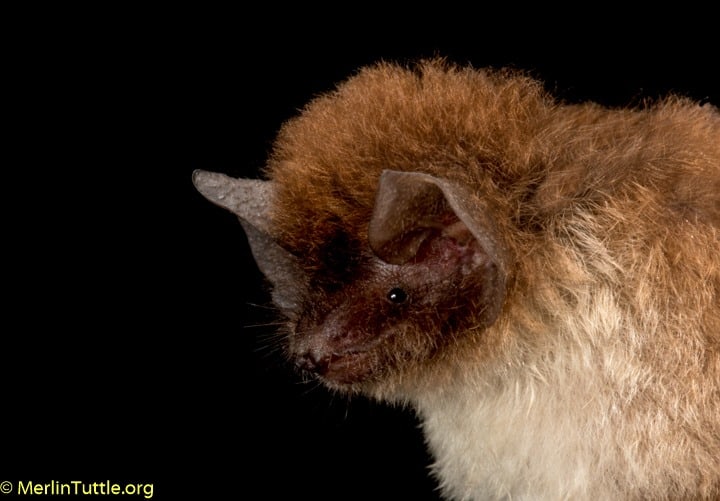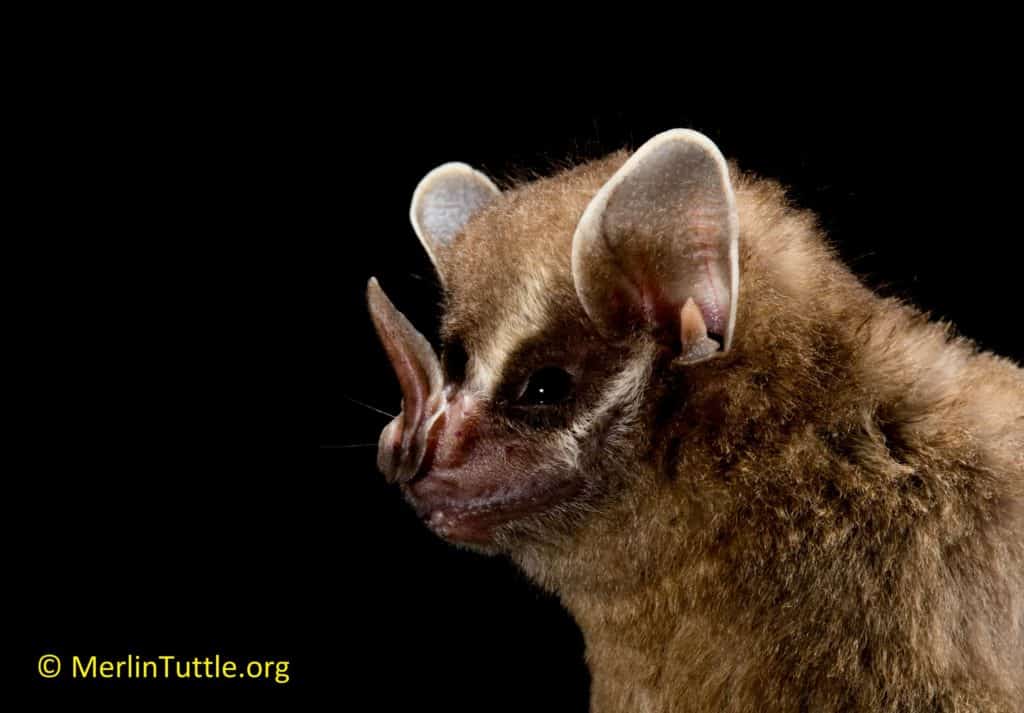Challenging torrential rains countered by cooperative bats in Costa Rica
Merlin and MTBC team members spent 19 days in Costa Rica last November on a filming trip for “Bat City” with its Director and Emmy
Thanks to Trinibat volunteers, 43 of Trinidad’s 68 bat species were captured, documented and released over the past two weeks. Little known species like Spectral (Vampirum spectrum) and Striped hairy-nosed (Mimon crenulatum) bats were tracked back to their unique roosts, providing new information essential to their conservation.
Merlin was able to photograph 20 of the most interesting ones. He set up his multi-flash portrait arrangement in the forest near where bats were being netted, supplied with meal worms and sugar water which helped put “smiles” on bat faces.
This week our group caught the elusive Trinidadian whiskered bat (Choeronycteris minor) that Merlin had hoped to photograph. It loved sugar water and was very photogenic.



Even the tiny Spix’s disc-winged bat (Thyroptera tricolor), fragile and difficult to photograph, eventually cooperated, as Merlin was nearing his patience limit. The Gervais’s tent-making bat (Artibeus cinereus), one of the island’s several tent making bat species, also graced Merlin’s lens.
The big challenge last night came when a common vampire bat (Desmodus rotundus) was caught. Merlin has of course photographed these before, but he wasn’t satisfied that his existing portrait did justice to these highly sophisticated animals. When first captured, fearing the worst, vampires can be very effective at defending themselves with exceptionally painful bites.
But in Merlin’s experience they can be quickly tamed when treated well. And he knew he’d stand a far better chance of obtaining a nice expression if he handled his subject gently without the heavy gloves generally used for protection when handling vampires. He proceeded gently without protection. During an hour of photography, the bat never once attempted to bite. In fact, by the time Merlin finished, he was able to just open his hand, and allow it to leap into flight.
Merlin released this vampire back to the forest, though he and his Trinibats hosts recognize that due to human introduction of livestock the species has overpopulated, causing problems that require control in some areas. Failure to help ranchers where problems exist can lead to destruction of countless other bats who are essential to healthy ecosystems. Common vampire bats are sophisticated, likable animals, once we simply get to know them.
I’ll let you be the judge of whether or not Merlin succeeded in getting a cute photo. We all breathed a sigh of relief as this bat departed. Merlin cautions that each bat has its own unique personality and that only experienced, vaccinated researchers should take such a chance, not that I was tempted!
We’ll next be photographing bats in some very special roosts prior to departing for home on Friday. Working with the dedicated volunteers of Trinibats has been a real pleasure. We thank each of them and share in their hope for a much improved future for Trinidadian bats.
Love our content? Support us by sharing it!
Merlin and MTBC team members spent 19 days in Costa Rica last November on a filming trip for “Bat City” with its Director and Emmy
Bats can use sounds in many complex ways. They can sing and even have different dialects… When imagining a bat, the first thoughts that come
Thanks to all the Join the Nightlife: Bats and Agriculture attendees who joined us out in the field this year! Guests got hands-on experience with
Supporter and friend of MTBC, Australian conservation and animal welfare photojournalist Doug Gimesy, had his images recognized in two categories at the recent Siena International
2024 © Merlin Tuttle’s Bat Conservation. All rights reserved.